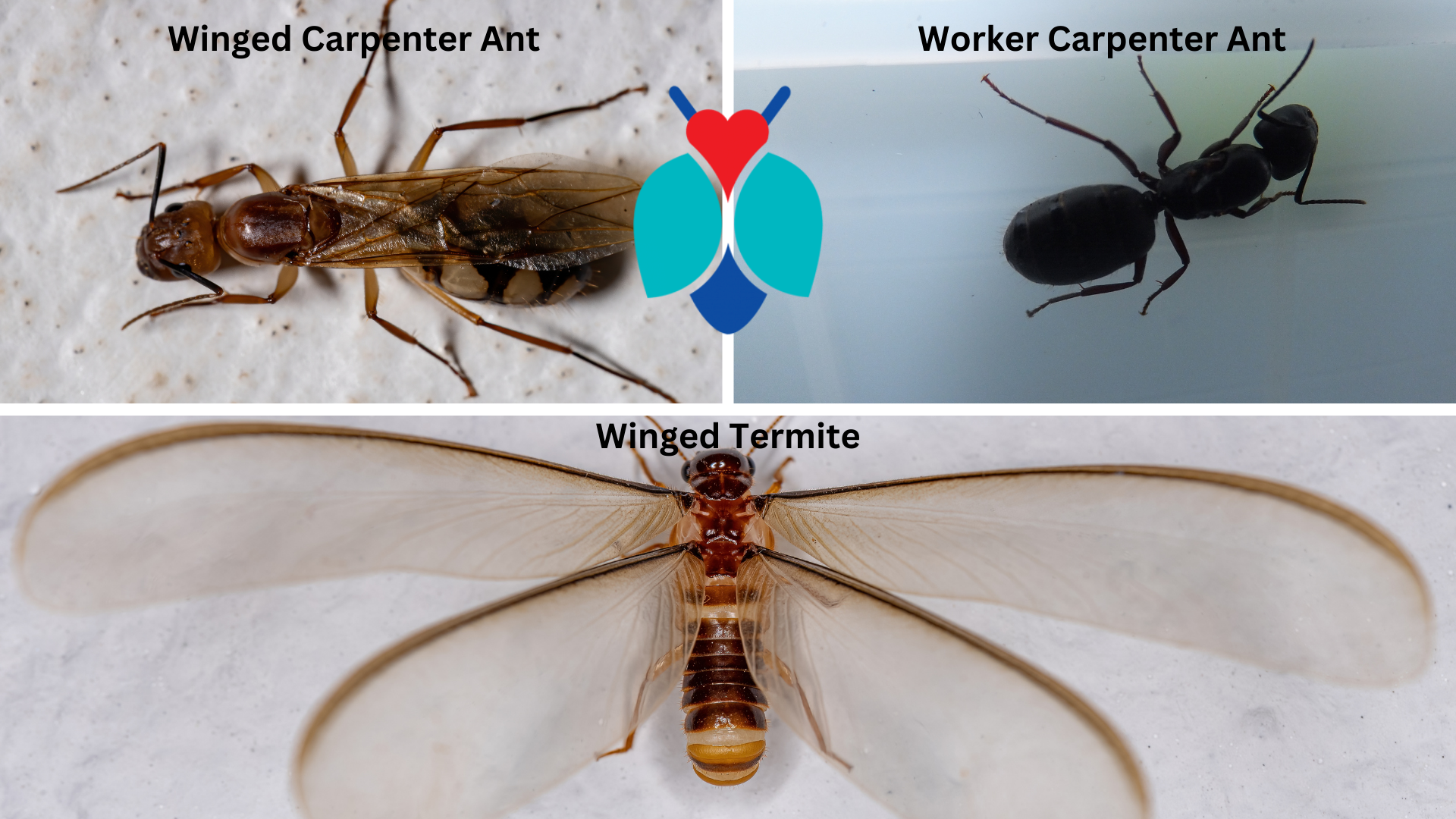Share Our Blog!
Carpenter ants
Minnesotans are lucky! They don’t have to worry about wood-destroying insects like termites. Termites are rare to find in Minnesota and when they are discovered they are almost always brought in by receiving lumber and furniture from out of state. Termites don’t care what condition the wood is in. They don’t just chew through dry and rotted wood like carpenter ants in Minnesota. They also can chew through drywall, carpet, and furniture. Luckily this is not the case for carpenter ants. Carpenter ants do chew on wood but as published on the University of Minnesota extension depending on the size of the nest, damage occurs slowly, often taking years to occur. Unlike termites that eat the entire wooden structure, carpenter ants only chew through it to build tunnels and galleries for their nests. The wood carpenter ants chew through typically is already rotten, wet, and damaged which is why seeing them can be a good indicator of telling homeowners that they have an underlying moisture issue occurring somewhere in their home.
Carpenter ants construct multiple nests per colony. One nest is a parent nest and the others are called satellite nests. These satellite nests are more often than not the nest that is active inside homes and buildings. The satellite nests are home to worker ants, matured larvae, and pupae. Carpenter ants start making these nests for the colony to grow. It allows them to retrieve more food by increasing their territory and finding a warmer spot to help with developing the ant’s larvae and pupae. The parent nests are home to the egg-laying queen ant, her larvae, pupae, and over 2000 worker ants. As the workers navigate between each nest that is usually when they are spotted coming inside and walking around living areas. Some of the most common areas where satellite colonies can be found are around; bathtubs, sinks, behind dishwashers, around poorly sealed windows/door frames, roof leaks, poorly flashed chimneys, and anywhere else that is capable of releasing moisture or leaking. The wet wood is softer making it easier for carpenter ants to chew through. Carpenter ants nests that are outside can be found in old tree stumps, wood piles, and trees. When climbing and going inside living trees the ants have a symbiotic relationship with the tree. It’s a natural behavior for the ants and it does not mean that the ants are killing the tree. Carpenter ants only feed and chew on the rotted parts of the tree and do not touch or impact the living structure of the tree. By getting rid of the rotted wood around the tree the carpenter ants are making the tree healthier and stronger and allowing for new growth to take place. It should be noted that if the tree is completely rotted out then precautions should be taken place by removing the tree before it causes damage to a structure or results in injury.
Carpenter ants come in many shapes and sizes. Some are larger than others and can be seen with wings. Worker ants can be between 3/8 to 1/2 inches long and are either all black or red and black. The carpenter ants with wings are larger and play a special role in helping build an ant colony. Seeing clusters of ants with wings indicates that the ants are getting ready to mate with each other. Both male and female carpenter ants can have wings but a female is much larger. A female ant or queen ant ranges from 1/2 in to sometimes up to 1 inch in length. Male carpenter ants are smaller and are the same size as the workers but are distinguishable by their wings. To mate, the female and male ants fly next to each other in an event called a nuptial flight. This occurs in late spring and early summer and once it is finished the male has no other purpose so he dies soon after and the queen eats her wings after she finds a new place to build her colony. Eating her wings gives her the nutrients she needs to feed her first cluster of eggs so they can eventually become worker ants. It takes about 6-12 weeks for the queen’s eggs to turn into workers. After they become workers they will forge for food to feed the queen allowing her to fertilize more eggs. The queen can live up to 25 years underground or in a tree and fertilize thousands of eggs in her lifetime. This is why it is so important for carpenter ant treatments to reach the queen to eradicate the entire colony.
There are no over-the-counter products available for people who have not licensed pest technicians that successfully get rid of carpenter ants inside the home. Even if there is a way to locate the nest site inside the structure, it’s impossible to know whether it is a satellite or a parent nest. Without killing the parent nest containing the queen ant the ants will continue to infest the property as the queen continues to hatch out more larvae and make more worker ants. At BOGO pest control we have licensed professionals that use an insecticide called Termidor. This pesticide was created to eliminate termites like ants living in social colonies. The product allows for the ants in the home to carry it back outside to the parent nest and satellite nests then spread it throughout the ants that stay underground. After treatment is placed around the house it takes around 30 days for all the ants to be eradicated. This includes the queen and the rest of the ants that don’t leave the nest. Only 10% of the ants in a nest leave the nest and the rest of them stay hidden and protected from any over-the-counter products like terror. Terro and other products end up killing the worker ants too quickly before they can reach the parent nest, leaving the queen and workers that are underground alive and well. So if you have any issues with carpenter ants or any other ants you know who to call. BOGO is your one-stop shop for solving all your ant problems.
Share Our Blog!
Click below to learn about our ant prevention services
If you have any questions or concerns or would like to schedule an appointment call or send us an email
Call Us Today! 952-404-BOGO (2646)




